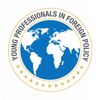By Paul A. Friesen
In Zimbabwe, over 4 million people are likely to go hungry at some point during 2016. For a country once considered the breadbasket of Southern Africa, food availability per person in 2014 was the lowest ever recorded according to the World Bank. This spring's absent harvest will leave the country desperately requiring food assistance, just as neighboring nations struggle to meet their own demands. Although the government of Zimbabwe has appealed for $1.6 billion in food aid from the international community, initial delays and a lack of preparedness by the government means that such assistance may come too late.
Poor governance and climate change-related weather events threaten to create chronic food insecurity for populations living across the developing world. 2014 and 2015 were the hottest years on record due to a combination of greenhouse gases increasing the world's baseline temperature, and a strong El Niño weather pattern. One of the adverse effects of El Niño is that areas including India, Australia, and the eastern coast of Africa receive much less rain than usual, and new research warns that rising greenhouse gases may double the number of extreme El Niño weather events.
Given the unpredictability of weather and its effects on agricultural production, long-term planning is crucial. Amid predictions of poor conditions for agriculture in 2015 and 2016, several Asian countries began organizing early by securing stockpiles of rice. Already, analysts are predicting that the current El Niño system will lead to decreased yields for maize, wheat, and rice by up to 5 percent across the globe.
Smallholder farmers in Sub-Saharan Africa, a group which includes 60 percent of all women living in the region, will experience the effects of climate change the hardest. Over 95 percent of agricultural production in Sub-Saharan Africa lacks irrigation, and is therefore highly vulnerable to the reduced rainfall caused by El Niño. Average temperatures in Africa are also expected to rise 1.5 times faster than the global average, while its population doubles by 2050. African maize, the primary staple for most people in Southern Africa, may be completely devastated in ten years' time in the absence of meaningful policy interventions.
Several countries in the Horn, Sahel, and Southern African regions are currently experiencing a food security "crisis" or "emergency" according to the Famine Early Warning System Network (FEWS NET). In the Democratic Republic of the Congo, torrential rains caused by El Niño have destroyed homes, food stocks, and public infrastructure. An ongoing drought in Ethiopia has resulted in over 10 million people urgently requiring subsistence support. In total, 20 million people will likely become food insecure in Southern Africa by early 2017, due to one of the worst droughts in recent memory.
Africa as a continent has only contributed about 8 percent of the total greenhouse gas emissions, while the United States and European Union have combined for more than 30 percent since the beginning of the industrial era. When natural disasters linked to climate change, a phenomenon largely caused by industrialized nations, bring about humanitarian crises in poorer countries, with whom does responsibility fall for providing relief to the most vulnerable?
The 2015 Paris Agreement is a vital first step in supporting those groups most affected by the changing climate through presenting a long-term plan to help curb extreme weather. The landmark agreement also includes $100 billion per year, to be distributed to developing counties starting in 2020, to support climate adaption strategies. Other interventions, some of which are already being implemented to help mitigate the effects of an increasingly unfriendly climate, include the development of drought resistant seeds, enhanced irrigation systems, and more readily available weather information for farmers. However, shifting the agricultural sector to adapt to these changes requires local governments to develop, approve, and implement effective policies.
Citizens from developing countries with ineffective governments, few safety nets, and poor infrastructure are at the greatest risk of suffering from long-term poverty and severe food insecurity. In order to help stem these risks, the wealthiest countries must embrace a multi-pronged approach of combatting climate change in their own countries, committing to the rapid deployment of humanitarian relief, and partnering with developing countries to promote good governance and adoption of new agricultural innovations. While food distribution is a necessary primary response to the current food crises, curbing climate change and supporting sound governance are just as vital to the interests of all nations.
Paul A. Friesen is a Program Assistant for Southern and East Africa at the National Democratic Institute for International Affairs, a nonprofit, nonpartisan organization working to strengthen democratic institutions worldwide. He holds a MPP with a specialization in International Development from Michigan State University and is a 2016 Sustainable Development Fellow at Young Professionals in Foreign Policy.
